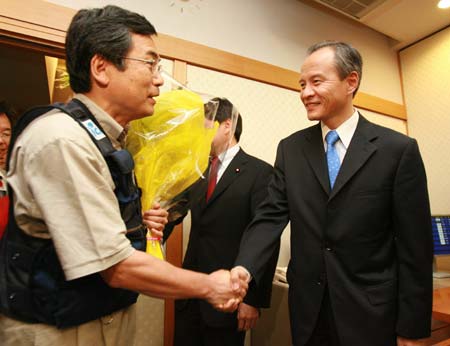"The Russian rescuers embraced each other and burst into tears after the trapped woman was pulled out of the rubble," said Li Wenxin, another Information Department counselor in the Ministry of Foreign Affairs.
The Russian rescue team also brought with them professional research equipment including maritime satellite telephones and rescue vehicles.
Intelligence, reason, knowledge and professional skills are proved to be the most efficient in the relief work, Li Wenxin said.
The rescue team from Singapore never gave up.
The rescue team from Singapore has a Chinese leader and most of its members can speak Chinese.
A middle-aged woman was buried in a seriously damaged building in Shifang, which was in danger of collapsing at any time from constant aftershocks. It was extremely dangerous for rescuers to remove her from the rubble. But when they saw family members of the buried woman standing vigil by the ruins all day and night, they proceeded with the search, recalled Sun Xiangyang, a division chief under the Department of Asian Affairs of the Foreign Ministry.
The rescuers also helped to carry and bury bodies. Some even helped the families of quake victims to clear big stones for graves.

Chinese Ambassador to Japan Cui Tiankai(R) shakes hands with the captain of the Japanese medical team at the Narita airport in Chiba Prefecture, Japan, June 2, 2008. A 23-member Japanese medical team returned to Japan from the quake-hit southwest China's Sichuan Province on Monday. The team cured a total of 1,355 patients since May 20 when they arrived in Chengdu, the capital of Sichuan Province.